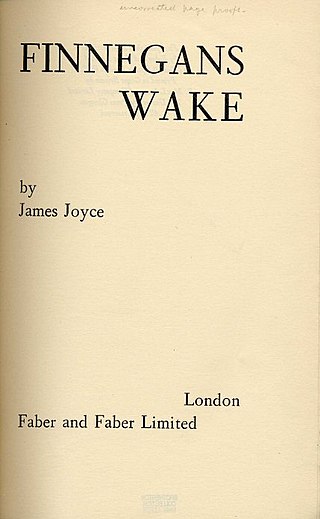
Finnegans Wake is a novel by Irish writer James Joyce. It is well known for its experimental style and its reputation as one of the most difficult works of fiction in the Western canon. Written over a period of seventeen years and published in 1939, the novel was Joyce's final work. It is written in a largely idiosyncratic language which blends standard English with neologisms, portmanteau words, Irish mannerisms and puns in multiple languages to create a refracted effect. It has been categorized as "a work of fiction which combines a body of fables [...] with the work of analysis and deconstruction"; many critics believe the technique was Joyce's attempt to recreate the experience of dreams and hypnagogia, reproducing the way in which concepts, memories, people and places become amalgamated in dreaming. It has also been regarded as an attempt by Joyce to combine many of his prior aesthetic ideas, with references to other works and outside ideas woven into the text; Joyce declared that "every syllable can be justified". Due to its linguistic experiments, stream of consciousness writing style, literary allusions, free dream associations, and abandonment of narrative conventions, Finnegans Wake has been agreed to be a work largely unread by the general public.
An obelisk is a tall, four-sided, narrow tapering monument which ends in a pyramid-like shape or pyramidion at the top. Originally constructed by Ancient Egyptians and called tekhenu, the Greeks used the Greek term obeliskos to describe them, and this word passed into Latin and ultimately English. Though William Thomas used the term correctly in his Historie of Italie of 1549, by the late sixteenth century, Shakespeare failed to distinguish between pyramids and obelisks in his plays and sonnets. Ancient obelisks are monolithic; they consist of a single stone. Most modern obelisks are made of several stones.
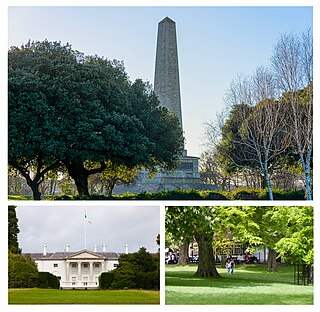
The Phoenix Park is a large urban park in Dublin, Ireland, lying 2–4 kilometres (1.2–2.5 mi) west of the city centre, north of the River Liffey. Its 11 kilometres (6.8 mi) perimeter wall encloses 707 hectares of recreational space. It includes large areas of grassland and tree-lined avenues, and since the 17th century has been home to a herd of wild fallow deer. The Irish Government is lobbying UNESCO to have the park designated as a world heritage site.

Merrion Square is a Georgian garden square on the southside of Dublin city centre.
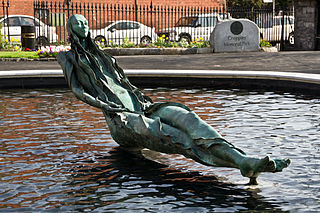
Anna Livia is a bronze monument located in Croppies' Acre Memorial Park in Dublin, Ireland. It was formerly located on O'Connell Street.

Wellington's Column, or the Waterloo Memorial, is a monument to the Duke of Wellington standing on the corner of William Brown Street and Lime Street, Liverpool, Merseyside, England. It is recorded in the National Heritage List for England as a designated Grade II* listed building.
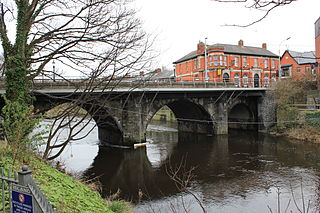
The Anna Livia Bridge, formerly Chapelizod Bridge, is a road bridge spanning the River Liffey in Chapelizod, Dublin, Ireland which joins the Lucan Road to Chapelizod Road.
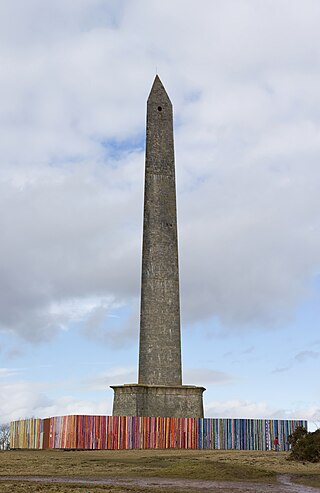
The Wellington Monument is a 175-foot-high (53 m) triangular obelisk located on a point of the Blackdown Hills, 3 km south of Wellington in the English county of Somerset. It is a grade II* listed building and is the tallest three-sided obelisk in the world.

The Royal Hibernian Military School was founded in the Phoenix Park, Dublin, Ireland in 1769, to educate orphaned children of members of the British armed forces in Ireland.
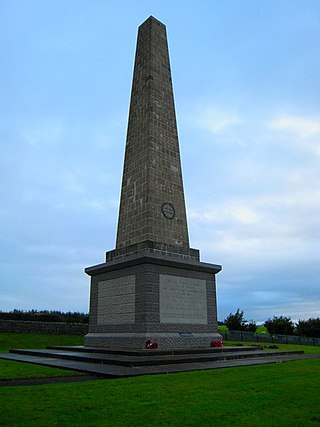
The Knockagh Monument is a war memorial in County Antrim, Northern Ireland. It is located on top of Knockagh Hill, above the village of Greenisland with a panoramic view of the city of Belfast.

Tibradden Mountain is a mountain in County Dublin in Ireland. Other former names for the mountain include "Garrycastle" and "Kilmainham Begg". It is 467 metres high and is the 561st highest mountain in Ireland. It forms part of the group of hills in the Dublin Mountains which comprises Two Rock, Three Rock, Kilmashogue and Tibradden Mountains. The views from the summit encompass Dublin to the north, Two Rock to the east and the Wicklow Mountains to the south and west. The geological composition is mainly granite and the southern slopes are strewn with granite boulders. The summit area is a habitat for heather, furze, gorse and bilberry as well as Sika deer, foxes and badgers. The forestry plantation on the slopes – known as the Pine Forest – contains Scots pine, Japanese larch, European larch, Sitka spruce, oak and beech. The mountain is also a site of archaeological interest with a prehistoric burial site close to the summit.
The Ballad of Persse O'Reilly is a song in book one of James Joyce's novel Finnegans Wake, where the protagonist H.C.E. has been brought low by a rumour which begins to spread across Dublin, apparently concerning a sexual trespass involving two girls in Phoenix Park; however details of HCE's transgression change with each retelling of events. Most of chapters 1.2 through 1.4 follow the progress of this rumour, starting with HCE's encounter with "a cad with a pipe." The cad asks the time, but HCE misunderstands it as either an accusation or a proposition, and incriminates himself by denying rumours the cad has not yet heard.

Nelson's Pillar was a large granite column capped by a statue of Horatio Nelson, built in the centre of what was then Sackville Street in Dublin, Ireland. Completed in 1809 when Ireland was part of the United Kingdom, it survived until March 1966, when it was severely damaged by explosives planted by Irish republicans. Its remnants were later destroyed by the Irish Army.

Jervis Street Hospital was a hospital in Jervis Street in Dublin, Ireland. The site of the hospital became the Jervis Shopping Centre.
John Bowden was an Irish architect and member of the Board of First Fruits of the Church of Ireland from 1813 to 1821. He was born in Dublin and died in 1822.

The North Borneo War Monument is a monument that was erected on 8 May 1923 by the North Borneo Chartered Company in Bond Street, Jesselton, British North Borneo. Originally, it was a memorial for the fallen British soldiers during the World War I but later extended to include the Australian soldiers in World War II. The monument stands today in the city park of Kota Kinabalu, the capital of the Malaysian state of Sabah.

Blessington Street Basin is a former drinking water reservoir in northern central Dublin which operated from 1810 until the 1970s, serving the north city. It became the central feature of a public park in 1891, and this park was renewed and reopened in 1994.






















